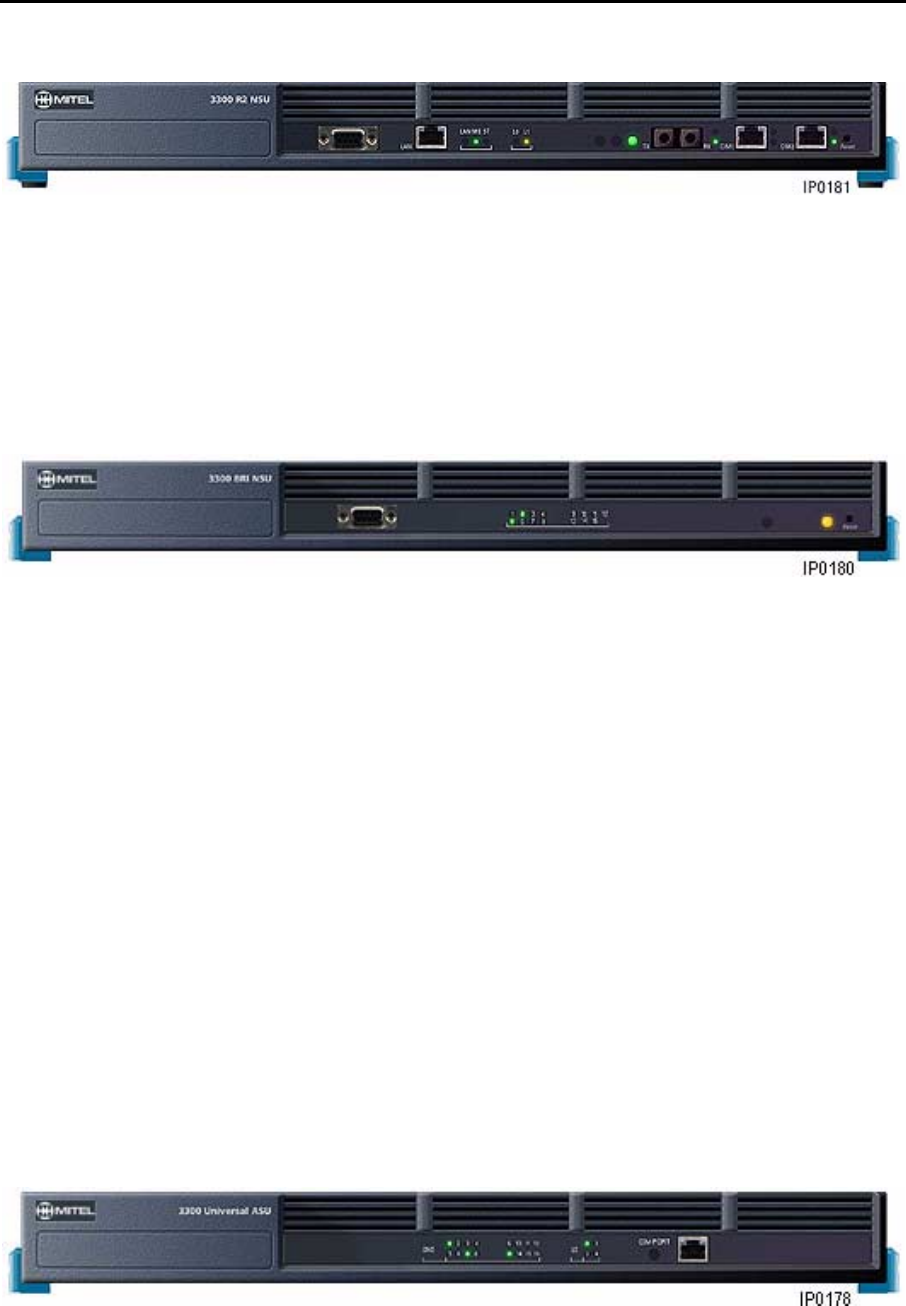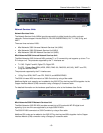
General Information Guide - Release 3.1
- 6
For detailed information on the hardware specifications, refer to the Hardware User Guide.
Mitel Networks 3300 BRI Network Services Unit
The Mitel Networks 3300 BRI NSU provides connectivity for Basic Rate ISDN (BRI) transport for both
data and voice traffic. It is available in North American and European variants. The North American
variant supports user-side interfaces. The European variant supports both network and user-side
interfaces.
The 3300 BRI NSU supports 15 BRI U-interfaces per unit. It does not connect to a 3300 Controller
directly but instead connects to the Mitel Networks 3300 Universal NSU by using a copper cable. For
detailed information on the hardware specifications, refer to the Hardware User Guide.
Analog Services Units
Analog Services Units
The Analog Services Units (ASUs) provide connectivity for analog trunks and telephones (POTS and
On-Premise Station (ONS)) to the 3300 ICP system. There are two variants:
• Mitel Networks 3300 Universal Analog Services Unit (ASU)
• Mitel Networks 3300 Analog Services Unit (ASU).
The 3300 ICP system supports up to four Analog Service Units in any combination giving a maximum
total of 96 analog ports for standard telephone connectivity on the system.
Mitel Networks 3300 Universal Analog Services Unit
The Mitel Networks 3300 Universal ASU is the combination unit that houses 16 ONS CLASS (Custom
Local Area Signaling System) and four Loop Start (LS) trunk CLASS ports. It also provides four
integral System Fail Transfer (SFT) relays that provide direct connection between an analog
telephone and Loop Start trunk in the event of a system or power failure.
The 3300 Universal ASU also provides the connections for Music on Hold (MOH) and Paging
capabilities. The connections are located on the rear panel of the unit. The unit connects to a 3300
Controller by using a Category 5 Universal Twisted Pair (UTP) cable that terminates on an 8-pin
modular jack (RJ-45).
For detailed information on the hardware specifications, refer to the Hardware User Guide.


















